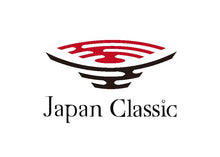【Japanese Pottery】The Meaning of "Bone" and "China" in Bone China
About the Author
Hayato Eihara
I am a Japanese resident living in Japan!
With years of experience, I share in-depth and detailed information about Japan with the world.
As part of my mission to promote Japanese culture, I also run Japan Classic, an online shop specializing in unique, high-quality tableware. If you're interested, feel free to check it out!
The Meaning of "Bone" and "China" in Bone China
Bone china is a type of porcelain that contains 30% to 60% bone ash, made by calcining (burning) animal bones, typically from cattle. First developed in late 18th-century England, bone china was initially created to replicate the fine white porcelain produced in China and Japan.
Table of Contents
- 1. What Is Bone China?
- 2. Why Use Bone Ash in Bone China?
- 3. The Meaning of "Bone" in Bone China
- 4. The Meaning of "China" in Bone China
- 5. Firing Process and New Bone China
- 6. Conclusion
1. What Is Bone China?
Bone china is a type of porcelain that contains 30% to 60% bone ash, made by calcining (burning) animal bones, typically from cattle. First developed in late 18th-century England, bone china was initially created to replicate the fine white porcelain produced in China and Japan. The popularity of white porcelain in Europe was influenced by the Chinoiserie (French: chinoiserie) movement, a fascination with Chinese art and aesthetics that flourished in the 17th and 18th centuries. Later, in the mid-18th century, the rise of Japonisme (French: Japonisme)—a European admiration for Japanese culture—also contributed to the high demand for white porcelain.
Although English bone china was inspired by Chinese and Japanese porcelain, its raw materials were different. Unlike traditional porcelain, which is primarily made from kaolin and feldspar, England lacked an adequate supply of these key ingredients. To solve this problem, English ceramicists substituted bone ash for feldspar to achieve a milky-white appearance.
2. Why Use Bone Ash in Bone China?
Bone ash is rich in calcium phosphate, which enhances the whiteness and translucency of ceramics. Unlike iron-rich clays, which darken upon firing, bone ash contains almost no iron, preventing unwanted discoloration. This made it an ideal material for producing bright white ceramics.
3. The Meaning of "Bone" in Bone China
Modern bone china still includes bone ash or chemically equivalent calcium phosphate compounds in its composition. However, due to the inclusion of bone components, bone china is more fragile and less plastic than traditional porcelain, making it more challenging to shape.
Despite its difficulty in production, bone china is globally valued for its elegant white body and smooth texture. Today, it continues to be produced not only in England but also across Europe and Japan, where its luxurious quality is highly regarded.
The "bone" in bone china clearly originates from its key raw material: bone ash. But what about "china"?
4. The Meaning of "China" in Bone China
As mentioned earlier, bone china was originally created to imitate Chinese and Japanese white porcelain. The history of white porcelain dates back to 6th-century China, during the Northern Qi dynasty (550–577 CE). This means that Chinese white porcelain predates English bone china by approximately 1,200 years.
Given this long history, China became synonymous with porcelain production. In English, "China" is often used as a synonym for porcelain. For example, "China ware" refers to fine porcelain, and many books use "China" instead of the term "porcelain". Additionally, several companies with "China" in their names specialize in porcelain products.
Thus, the term "bone china" originates from its unique combination of bone ash (bone) and its inspiration from Chinese porcelain (China).
5. Firing Process and New Bone China
Traditional porcelain, made from feldspar and kaolin, is typically fired in a reducing atmosphere (a low-oxygen environment). This firing method causes the trace amounts of iron in the clay to produce a slight blue tint in the final product.
What Is "New Bone China"?
A variation called "New Bone China" does not contain calcium phosphate or bone ash. Instead, it is a white porcelain made from feldspar and kaolin, and its color comes from the natural whiteness of feldspar rather than bone ash. Like bone china, New Bone China is also fired in an oxidizing atmosphere.
New Bone China was developed in 1960s Tajimi, Japan, and is named "new born" to reflect its modern origins. It is more cost-effective and easier to mass-produce than traditional bone china. While it lacks the refined quality and extensive craftsmanship of bone china, its affordability and translucency make it a widely used alternative.
6. Conclusion
Although bone china was originally developed as an imitation of Chinese and Japanese porcelain, it has since evolved into a distinct category of fine ceramics. Today, it is recognized worldwide for its unique blend of elegance, durability, and craftsmanship.
Brighten Up Your Table.
We deliver vibrant, high-quality pieces directly from Japan to add color and elegance to your dining experience.







Leave a comment